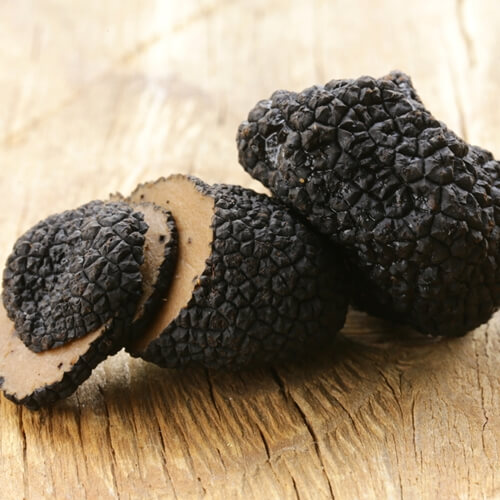What Is The Deal With Truffles?
As far as fungus and mushrooms go, truffles are that kid in high school who didn’t really fit in but once they grew up became a swanky millionaire. Why are they so revered and so incredibly expensive? We’ve got the scoop so you don’t have to fork over any of the tuition for your culinary school programs to get a piece of the action.
What are they?
They’re a fungus. They grow underground on the roots of trees in very specific places, and farming them is difficult and not a widespread practice. They range in size from a marble to a golf ball and do not have a stem like their mushroom cousins. Truffle hunters use highly trained dogs and pigs to seek out the underground treasures. Only two types of truffles are considered delicacies: black truffles and white truffles. Black truffles grow in Europe, particularly in the Perigord region of France. The best time to harvest them is from September to March. These fungi add a pungent, earthy aroma and flavor to any dish and can be cooked to bring out their complex flavors. Adding black truffle shavings to your meal at a restaurant in France can cost several hundred dollars. White truffles are more sought after and rare than their darker counterparts. They’re also way more expensive. A pound can cost up to $3,600. White truffles only grow in Northern Italy from October to December. In order to fully experience their strong and complicated flavors, these truffles are often eaten raw.
How do I get my hands on them?
It’s hard to find whole truffles in the U.S. You can, however, find truffle products like pastes, butters, powders and infused oils. Truffle products can be an excellent addition to pasta, risotto, egg dishes and salad dressings.
If you want to get to the very root of the truffle industry, you can adopt your own tree in Gascony France with Truffle Tree. Interested parties can choose from a Downy Oak or Holm Oak to preside over on a yearly basis. Adopters will own the 4-by-5-meter plot of land around the tree and any truffles that grow there. A yearly fee provides the tree with irrigation, harrowing and pruning, weed control and someone to harvest the truffles to be sent to you or sold. If you choose to sell your truffles, the profits will be sent to you. The catch is that there is no guarantee that your particular tree will grow truffles. Still, what a crazy story when the subject of the revered truffle comes up in conversation :”Oh yeah, I have a tree full of ’em in France!”


